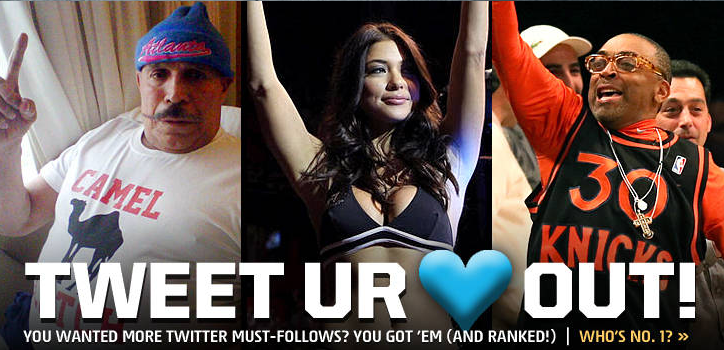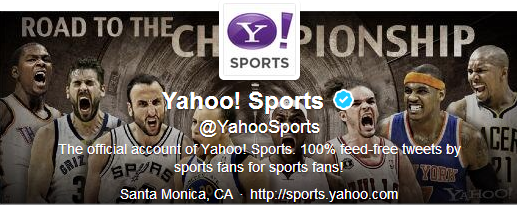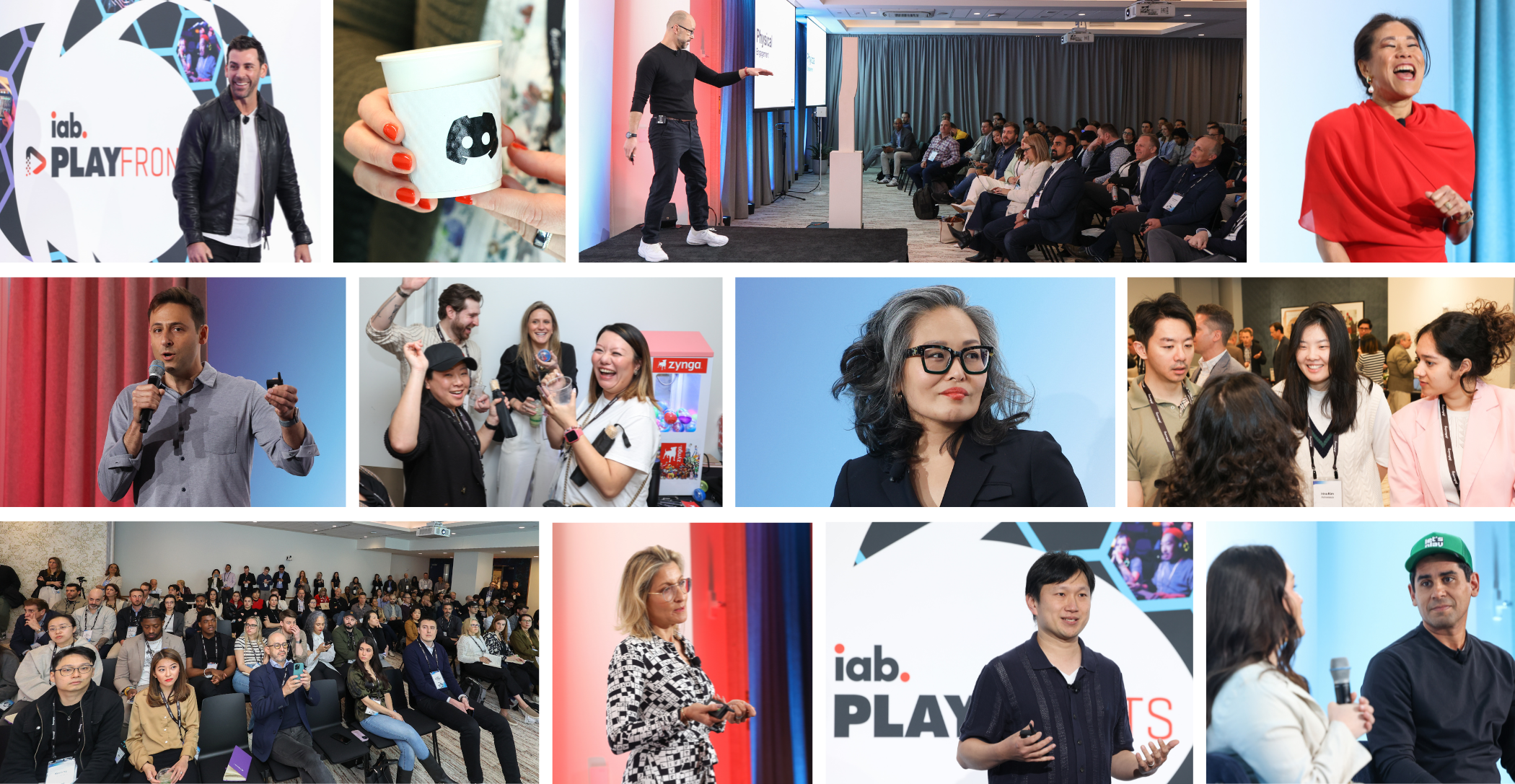At the IAB’s Social Media Agency Day last month, held in the beautiful offices of AppNexus in New York City, I had the honor of moderating the sports marketing panel.  The event’s title, “Social: Planning for the Real Time,” was apt given that sports is a highly conducive venue for real-time marketing. That is especially the case with social media marketing, which, increasingly, requires marketers to be constantly on their toes, ready to take advantage of any important moment or relevant opportunity within or around a sporting event in which their brand could potentially benefit or add to the evolving story of that game, match or event. In short, the combination of sports, social media and real-time marketing are a potent elixir for savvy markets and brands wishing to tap into consumers’ insatiable demand for smart, visually appealing content.
The event’s title, “Social: Planning for the Real Time,” was apt given that sports is a highly conducive venue for real-time marketing. That is especially the case with social media marketing, which, increasingly, requires marketers to be constantly on their toes, ready to take advantage of any important moment or relevant opportunity within or around a sporting event in which their brand could potentially benefit or add to the evolving story of that game, match or event. In short, the combination of sports, social media and real-time marketing are a potent elixir for savvy markets and brands wishing to tap into consumers’ insatiable demand for smart, visually appealing content.
I led a discussion with three distinguished panelists. We discussed a number of topics related to real-time sports marketing, but first, we had to get the obvious out of the way: Oreo’s now-famous Super Bowl blackout ad. While the Oreo ad featured prominently in much of our discussion about how social media and real-time marketing are changing sports marketing for better and worse the panelists quickly made it clear that the ad shouldn’t live in a vacuum. The reality of real-time social media marketing in sports is that it’s not just the big, epochal moments that make for great marketing opportunities for brands. It’s what you do to integrate your brand within the broader context of the sporting event between the pitches, between the downs and after the whistle blows that sets the digitally savvy brands apart from those that allow themselves to be bystanders.
I asked each sports marketer to reflect on what real time marketing means to their organization, how social fits into the equation and how success is measured. Below is a synopsis of each of their thoughts on how real-time social media marketing is altering the sports marketing landscape, with some of their favorite examples.
Marla Newman | Senior Vice President of Sales | Fox Sports Digital
Real time marketing means engaging with our fans in a way that enhances their viewing experience, their sports knowledge and/or their fandom. Social is the most effective vehicle for real time marketing in fact they are synonymous.
In terms of inserting ourselves within non-obvious real-time marketing situations, it’s important for us to extend the relationship they have with our brand and our talent on-air and deepen that relationship. It’s important for us to be relevant to their sports experience, which enables us to be considered the go-to source of info and continue to make sports fun.
 What does success look like? I don’t think anybody has cracked this code yet. We can only look to show increases in the number of our fans engaging tweet, re-tweeting, taking any form of action then we are heading in the right direction.
What does success look like? I don’t think anybody has cracked this code yet. We can only look to show increases in the number of our fans engaging tweet, re-tweeting, taking any form of action then we are heading in the right direction.

Jonathan Perelman | Vice President of Agency Strategy and Industry Development | BuzzFeed
Social media is all about real-time. I think real-time marketing is quite simple: it’s capturing a moment in a natural and organic way.
Tricks don’t work in social; the consumer can see right through it. To be good in real-time social media marketing, brands need to capture a moment and evoke emotions.
![]()
The concern is that marketers will try too hard and will want to turn every event into a real-time marketing opportunity; that simply won’t work. I love a BuzzFeed example in which we worked with MLB 2K13, the video game that launched around the start of the 2013 Major League Baseball season.

Another good example with BuzzFeed is work we did with the NHL around the playoffs in 2012. Leveraging known tent-pole events and allowing great content to find its audience served both brands well.
As for a non-obvious situation, I’m impressed with the Tide newsroom. Tide quickly took advantage of a crash at the Daytona 500, where the crew used Tide to clean the crash site. Tide aggressively used a spontaneous moment and filled the social Web with organic, timely content.
Success on the social Web is about sharing. A key metric in that respect is how often a piece of content is shared/reproduced on the social Web. It’s very difficult to simply make something go “viral.” Creating shareable content that captures the moment and evokes emotion is what works on the social Web. These qualities are what make sports so much fun to watch and talk about.
Patrick Albano | Vice President of Sales | Mobile and Innovation, Yahoo! Sports

We have taken a few interesting approaches to real-time marketing that have helped brands scale this concept. Brands reacting quickly and pushing content or commentary out over social channels is attractive. But we find it’s difficult to scale and sustain this strategy. We have developed ways to help brands understand the stories that are going to go viral before they do and have been able to attach a brand to that content as people start talking about those topics and sharing relevant content. Imagine if we could have told the Oreo team there was a blackout coming and allowed them to prep their integration ahead of time?
A good example of this was the work we did with a wireless service provider for last year’s NCAA tournament. Our editors created “bundles” of content in real time based on the major sports stories in the new. We integrated the brand into the story that day, so all of the discussion and sharing that occurred around the story included the brand.
Another great example is our Smart Ads program, which a large beer brand took advantage during the 2012-13 fantasy football season. The actual ads within the game updated in real time with the names of teams and scores from the previous Sunday’s fantasy match ups, sparking smack talk sponsored by the brand.

Success for these campaigns comes in the form of engagement and earned media. We see up to 20 times the engagement lifts with the real-time personalized ads. By attaching to content that’s already being shared and discussed the brand “rides along” and earns media without having to have a news desk or clever social media manager. We’ve also seen 2-3 times the lift in purchase intent and brand favorability based on the brands being able to relate in real time.
This is the third in the blog series that provides an overview of discussions from the April 3, 2013 “Social – Planning for Real-Time” Agency Day including ways that Travel, CPG, Sports, and Auto have planned social for real-time to make their marketing dollars work harder, and is also a part of IAB Social Media Committee member initiatives focusing on the intersection of Social with Paid, Owned, and Earned Media Best Practices. For more information, contact Susan Borst, Directory Industry Initiatives, IAB – [email protected]. #iabsocial #iabpoem




